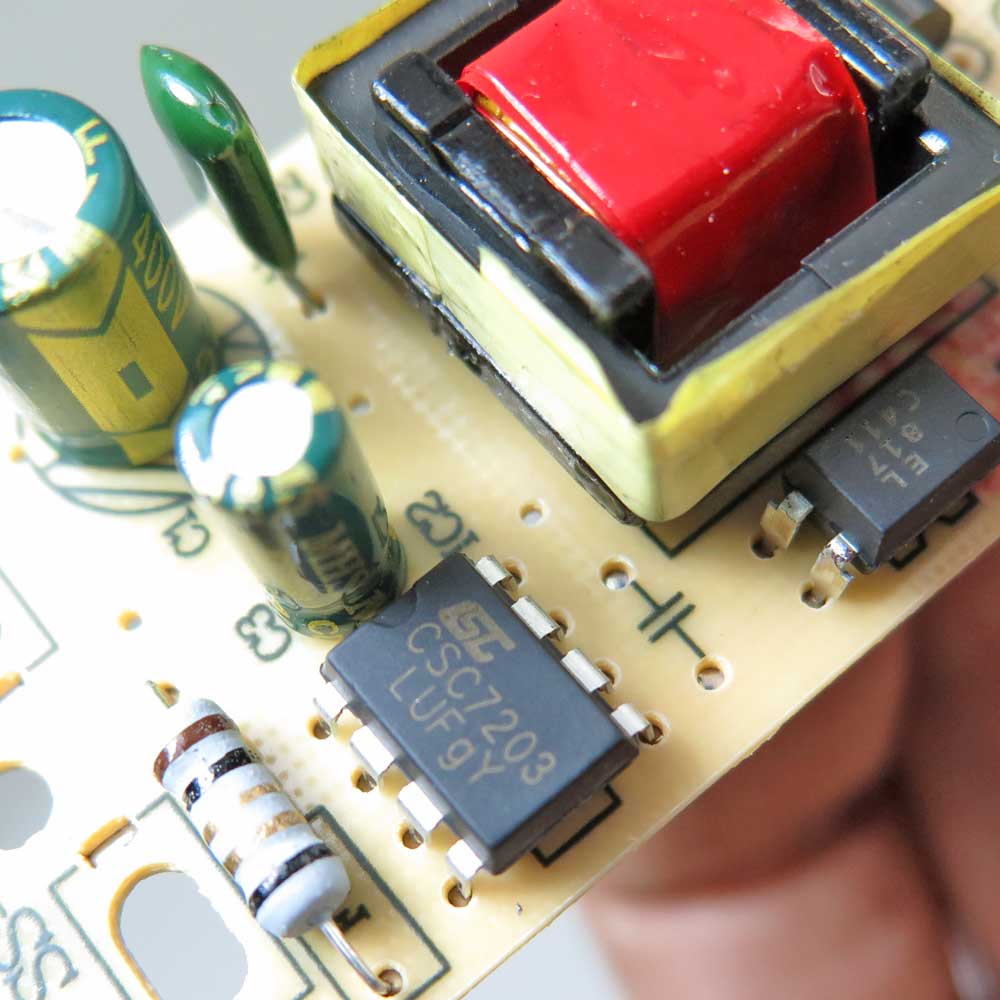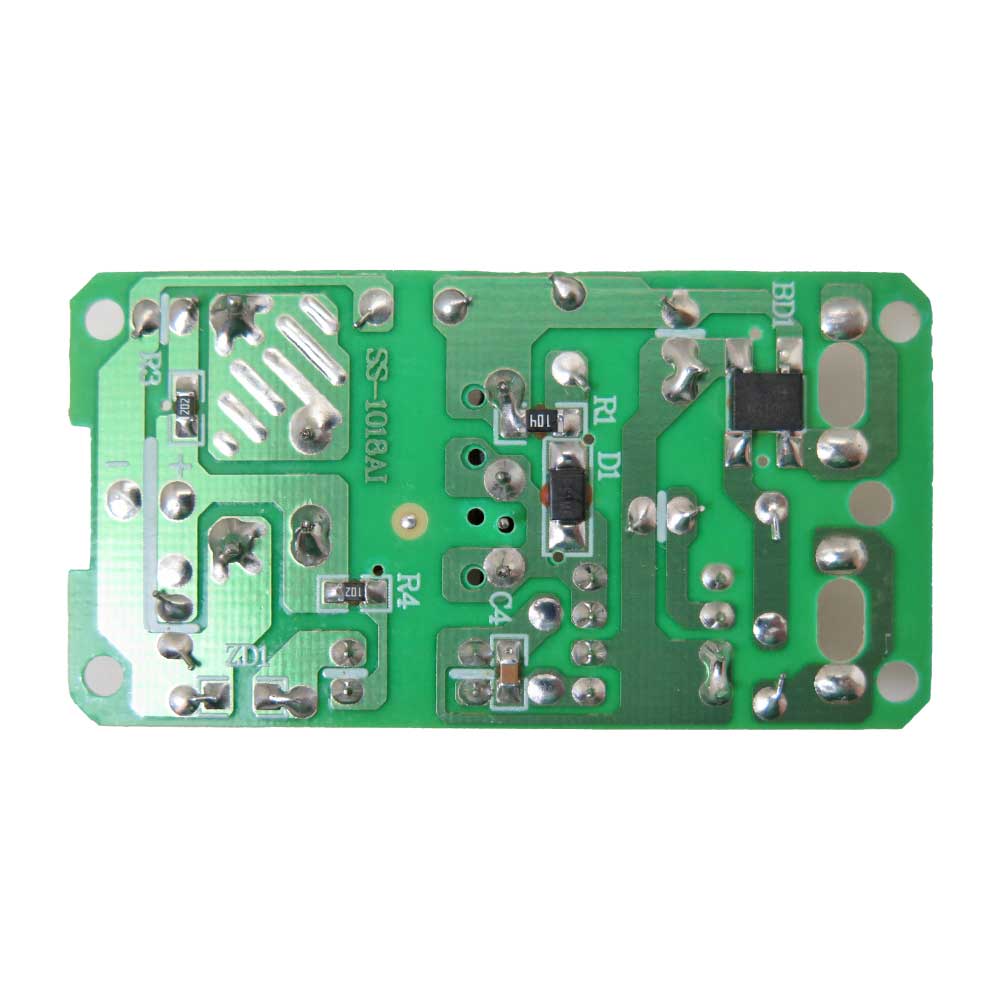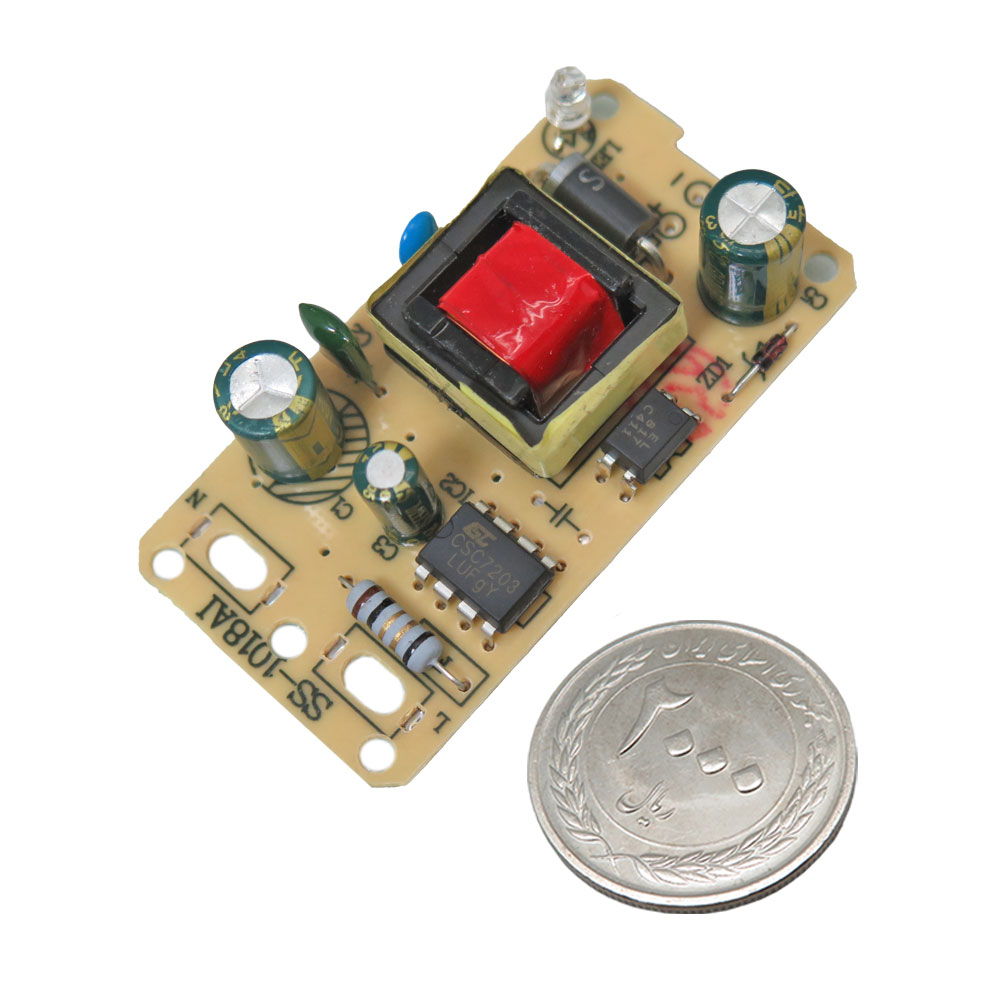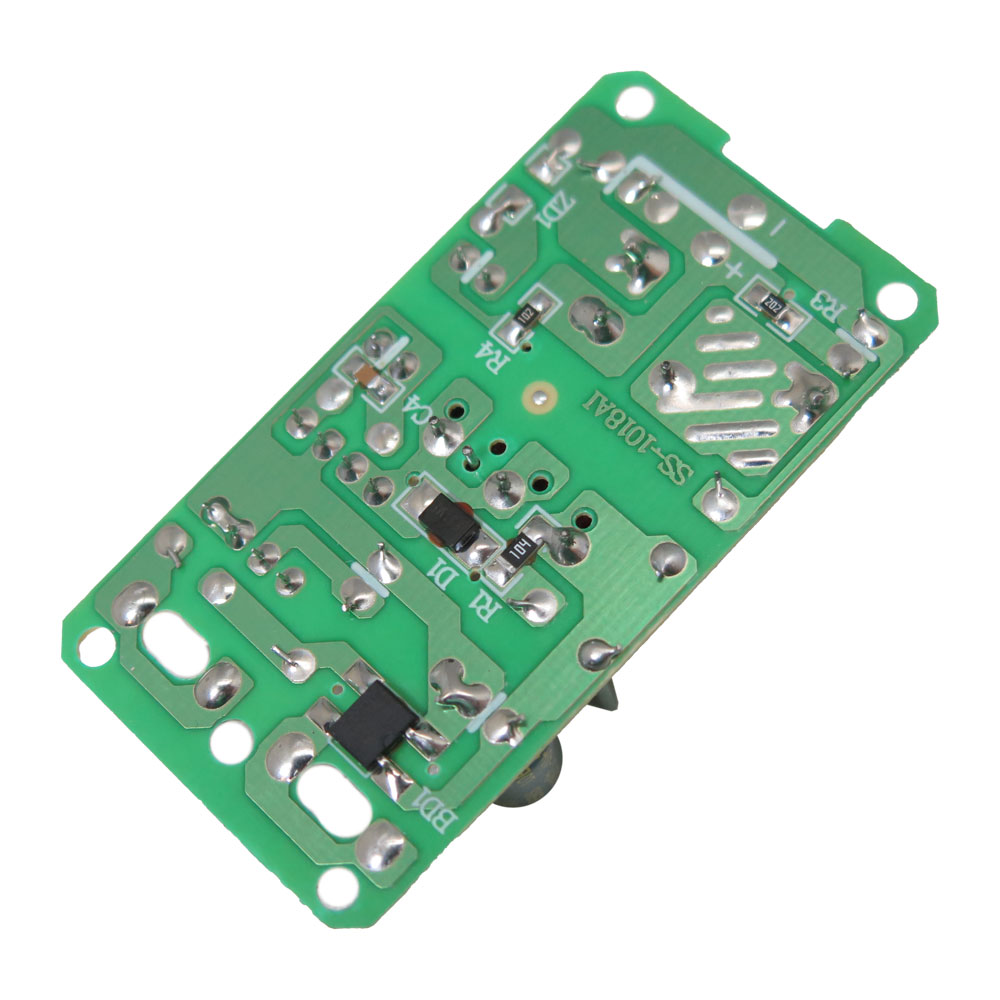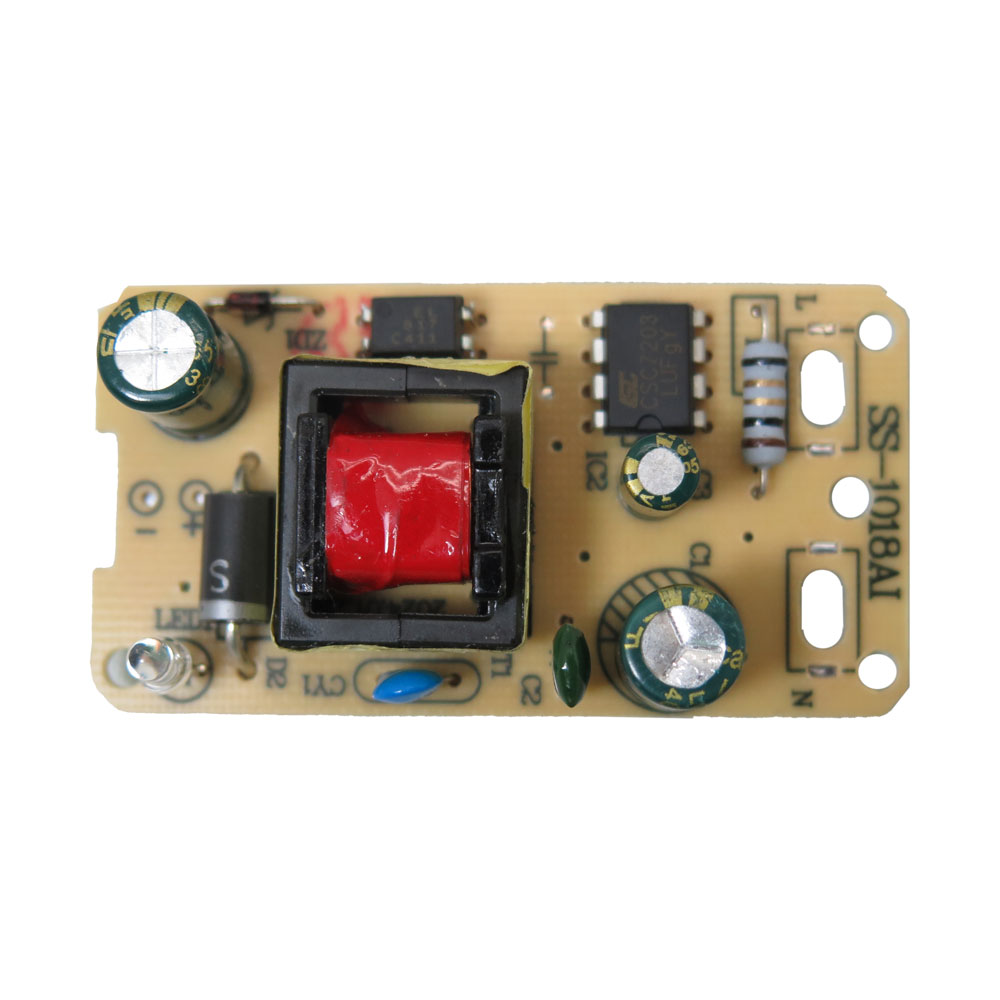75,730 تومان
کالا موجود استموجودی انبار : 828 عدد
علاقه مندان : 35 نفر
وضعیت : فعال
تعداد مرجوعی : 2
دنبال کنندگان : 40 نفر
قدمت : 8 سال و 8 ماه و 7 روز
وزن : 45 گرم
کل فروش : 9112 عدد
تعداد سفارش ها : 656 سفارش
4 از 5.0 با 18 رای
ماژول پاور سوئیچینگ دارای خروجی 5 ولت 2000 میلی آمپر
آداپتور سوئیچینگ 5 ولت 2 آمپر سازگار با ولتاژ (220/110) است. ویژگی اصلی آداپتورهای سوییچینگ در مقایسه با آداپتورهای ترانسفورماتوری، کیفیت ولتاژ خروجی می باشد. ولتاژ خروجی این آداپتورها کاملا رگوله بوده و مقدار ولتاژ خروجی به مقدار ولتاژ ورودی وابسته نمی باشد. این مورد در تغذیه قطعات حساسی مانند LED تاثیر زیادی دارد. با استفاده از فیلترهای مختلفی که در مدار این آداپتورها قرار گرفته نویز خروجی حذف شده و همین امر سبب شده تا این آداپتورها به بهترین گزینه جهت تغذیه دوربین های مداربسته تبدیل گردند.
سبکتر بودن و بالاتر بودن امنیت استفاده از این نوع آداپتورها در مقایسه با آداپتورهای ترانسفورماتوری از دیگر مزیت های این نوع آداپتورهاست.در نظر داشته باشید که آداپتورهای سوییچینگ از مجموعه ای از قطعات الکترونیکی ساخته شده اند که کیفیت هر یک از این اقلام می تواند تاثیر بسزایی در کیفیت محصول نهایی و کارکرد آن داشته باشد و عموما در صورت بروز اشکال در هر یک از این اقلام کل مجموعه دچار اشکال میگردد.
این ماژول دارای ابعاد مناسب به منظور استفاده در کاربردهای مختلف می باشد. ولتاژ ورودی این ماژول از نوع AC، و ولتاژ خروجی آن از نوع DC به مقدار 5 ولت و جریان خروجی 2 آمپر می باشد.
کاربرد ماژول تغذیه سوئیچینگ 5 ولت 2 آمپر :
- تبدیل ولتاژ AC را به DC برای تغذیه دستگاه ها و قطعات حساس
مشخصات ماژول تغذیه سوئیچینگ 5 ولت 2 آمپر :
- برد تغذیه 5 ولتی با جریان 2 آمپر
- ولتاژ ورودی: 240 ~ 100 ولت با فرکانس 60 ~50 هرتز
- ولتاژ خروجی: 5 ولت
- جریان خروجی: 2 آمپر
- ابعاد: 1.5 * 3 * 5.8 سانتی متر
Description:
DC power supplies are available in either switch-mode (also called switching) or linear designs. While both types supply DC power, the method used to produce this power is different. Depending on the application, each type of power supply has advantages over the other one. Let’s look at the differences between these two technologies as well as each design’s respective advantages and disadvantages.
A switch-mode power supply converts the AC line power directly into a DC voltage without a transformer, and this raw DC voltage is then converted into a higher frequency AC signal, which is used in the regulator circuit to produce the desired voltage and current.
These results in a much smaller, lighter transformer for raising or lowering the voltage than what would be necessary at an AC line frequency of 60Hz.
These smaller transformers are also considerably more efficient than 60 Hz transformers, so the power conversion ratio is higher.
A linear power supply design applies the AC line voltage to a power transformer to raise or lower the voltage before being applied to the regulator circuitry. Since the size of the transformer is indirectly proportional to the frequency of operation, these results in a larger, heavier power supply.
Each type of power supply operation has its own set of advantages and disadvantages. A switch-mode power supply is as much as 80% smaller and lighter than a corresponding linear power supply, but it generates high-frequency noise that can interfere with sensitive electronic equipment. Unlike linear power supplies, switch-mode power supplies are able to withstand small losses of AC power in the range of 10-20 ms without affecting the outputs.
The linear power supply requires larger semiconductor devices to regulate the output voltage and therefore generates more heat, resulting in lower energy efficiency.
A linear power supply normally operates around 60% efficiency for 24V outputs, whereas a switch-mode power supply operates at 80% or more. Linear power supplies have transient response times up to 100 times faster than their switch-mode counterparts, which is important in certain specialized areas.
In general, a switch-mode power supply is best suited for portable equipment, since it is lighter and more compact. Because the electrical noise is lower and easier to contain, a linear power supply is better suited for powering sensitive analog circuity.
Features:
5V 2A Switching Power Supply (bare board)
Input Voltage: 100-240V AC
Input Frequency: 50-60Hz
Output: 5V DC
Output current: 2A
Size: 5.8 * 3 * 1.5cm
Protection Function:
Over-voltage
Over-current
Short Circuit Protection
IC Protection

